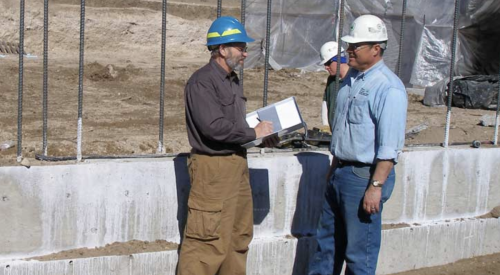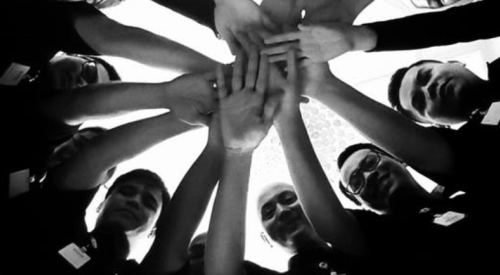|
Housing volatility in past years has made employees jumpy, and understandably so. Most have one eye on their next job, fearful of market downturns and big builder buyouts. Keeping them loyal and engaged requires creative, involved management.
"As a small builder, you've got to realize, you can't keep everybody long-term," says Bob Whitten, a former builder and now a consultant with SMA Consulting in Orlando, Fla. "Those days are long gone.
 |
"But what you can do is be upfront with people. You say to them 'Here's the deal. Give me three or four good years of work, and I'll give you three good years of training.'"
Good salaries, benefits and other perks still carry a lot of weight in keeping employees, but offering intrinsic value that comes from solid training, for example, may go further toward employee loyalty than traditional incentives, Whitten notes. Training improves job security in an age when workers often sign no-fault "work for hire" contracts with no guarantees about the future.
Profit sharing is an old tool. It's a favorite for keeping employees on board and at the builder's elbow. But Whitten says many companies misuse such plans. Instead of creating narrowly focused, performance-based plans for individual employees as a way to encourage good work, they simply offer company-wide profit sharing.
"A lot of builders have these complicated formulas that determine whether employees will get a share that year. But the problem is that most employees don't understand the formula, so they don't know if they will get it that year. Then most of it goes into a 401k program, so it doesn't help build employee confidence.
"The biggest thing," he adds, "is that this kind of plan is one over which employees have no control. An employee should only be held accountable for the things over which he or she has control.
"Let's use the superintendent as an example," he continues. "We want to measure him not based on the gross margin of the company, but on those things that roll up when he does his job. These would include the time of construction, the variance between cost and budget and a quality measurement of some sort. Also, you want to measure customer satisfaction. Send out a survey after the closing and ask how he handled their concerns."
Company-wide profit sharing may still be a good idea, Whitten adds, but only as an add-on program to other incentives, not a central part of the benefits package.
"I recommend to my small companies that they always pay people above the market scale," he adds. "That helps get people in the door," notes Whitten. "But performance-based incentive programs are what keep good people around. I have two clients who literally share profits with their best guys every time they close on a house. That's taking performance-based incentives to the ultimate level."
Another key to employee loyalty is to give them control, says Alan Weiss of Summit Consulting Group and an author of more than 25 books on management and consulting. (www.summitconsulting.com) Weiss, based in East Greenwich, R.I., works with companies large and small. His view on employee retention: When you delegate decision making to employees, a lot of their stress goes away. "They relax and start to believe nothing can happen to them because they're important to the company," he says.
Weiss says that even during tricky mergers and acquisitions, employees can be convinced to sit tight.
"I'll give you an example," he says. "Calgon, a water treatment company, was owned by Merck, who were divesting it to sell to an English firm. They didn't want to lose key employees in the process, although everyone assumed there would be staff reductions. So they identified the key people and made them intrinsic to the process."
Calgon's management invited key employees to work on a transition task force with the new owner. That made them feel valuable — not disposable.
The flip side of empowering employees is making them feel powerless, Weiss explains. Powerless employees will try to create what he calls "artificial power" (also known as bureaucracy) as a placebo for genuine control. In sales settings, he says, artificial power typically manifests in the employee's attitude toward customers, with "ridiculous policies, rude comments, harsh treatment and deliberate sabotage." Needless to say, this negativism lowers company productivity and can hurt your reputation.
Weiss says most builders don't realize that every time they suddenly fire or lay off an employee, the shock of that change gets magnified.
"For every person you fire, you lose three additional people," he explains. "You often lose the person who feels guilty because she had to do the firing — you lose her productivity. You also lose the person who gets scared and hides, for fear he will be next. Then you lose the person who says, 'They'll never do that to me' and gets a new job — and that's often one of your most talented people. Management is usually not enlightened enough to think of these things proactively."
Builders and other business managers also frequently make the loss of an employee worse in the aftermath. Instead of removing that person's work altogether from their system, they simply hand off his duties to someone else on the staff, typically with no extra pay. That's a good way to incite mutiny.
What's the alternative? Eliminate the work that person was doing altogether, or redistribute it fairly — and include yourself. You have to take a hit, too.
"Let's say you're going to lay off 'Bill,'" says Weiss. "You let your employees know about it, and you say 'I'm going to take this part of Bill's job myself. You and you will take these other parts. The point is to spread around the responsibility."
Of course, good feelings don't prevent some employees from losing their jobs when profits head South. But Weiss says layoffs and firings can be low-key events if handled wisely.
"When Atlantic Electric, a big utility in Atlantic City, N.J., decided to downsize," he recalls, "it did so proactively." The company created an inventory of personnel from the ones being laid off, then marketed that inventory out citywide — helping them find new jobs. This had a tremendous positive effect on the remaining employees, who felt the company would treat them fairly.
"What you find too often with corporations," Weiss adds, "is that downsizing means simply throwing people out on the street. Few companies realize the extent of the negative impacts."
Mike Foti, owner of Columbus Glass Block in Columbus, Ohio, often speaks to builders about leadership. He agrees that dealing frankly with employees in down times is essential — but it should happen all the time. (www.columbusglassblock.com)
"I spoke to a guy recently whose company was having some hard times, and he tried to rally them by saying, "let's be gung-ho about this and win." Now he thinks he made a mistake. He should have been honest and asked for help.
"A lot of men — especially in this business — don't like to admit it when times are tough and they need help," Foti continues. "But employees respond to vulnerability."
When you do lay off people, you may be wise to hire them back as hourly contractors or consultants, Weiss says. Whether you bring them back part time or not, however, you may want to extend their benefit package well beyond the day of termination for two reasons: First, continuing a benefit package may address legal issues. You don't want the impression that you simply kicked an employee off the payroll so you could ditch his benefits. And second, you maintain morale and confidence among other employees.
Cutting back salaries is a drastic step, but it can be done when necessary to save the company if you follow certain rules of thumb, Weiss says. First, it must be presented as a temporary measure. Salaries will go back up within a finite time frame. "People have got to believe you're doing it to save jobs," he explains. "And they have to see evidence that everybody is taking the cut. That means closing the executive dining room, no golf vacations in Naples for the boss."
Management experts differ slightly on how much personal contact employees need with supervisors and each other. Whitten, for example, believes his personnel should have a minimum of a once-a-month, face-to-face encounter.
Weiss says those rules of engagement are already being rewritten by most companies, as employees gain new levels of autonomy thanks to technology.
On a deeper level, however, both men acknowledge there's no one-size-fits-all solution. Some employees, such as site superintendents, have little option but to deal directly with subs, framing crews and others in the field. They're used to personal communication. Others telecommute, rarely coming to the physical office. The building industry, of course, has been slower to join this trend, but IT services, billing and other back office jobs can increasingly be outsourced. Certain employees, nonetheless, tend to do better in an environment of high-touch management.
"Sales people especially need a lot of hand holding," Whitten notes. "That's pretty typical. Their business is all about relationships. You need to know how they're doing, and they need to talk."
Whitten also puts a lot of faith in ongoing training. An employee being trained, he says, knows that even if his time with a company is limited, he'll walk out the door better prepared for the next job.
"We always say that 5 percent of base salary should be spent on training every year," Whitten says. Most builders spend a lot less than that each year, and it's the first thing they cut when times are bad. But that's exactly what your best employees care about."
Weiss echoes that observation — but with a humanistic theme.
"You want loyal employees? Invest in their training, and always listen to them," he advises. "Give them rewards for good ideas even if the ideas don't work out. Treat adversity with ethical considerations. If you lay off, do it in a humane way. Give them a light at the end of the tunnel."
|












